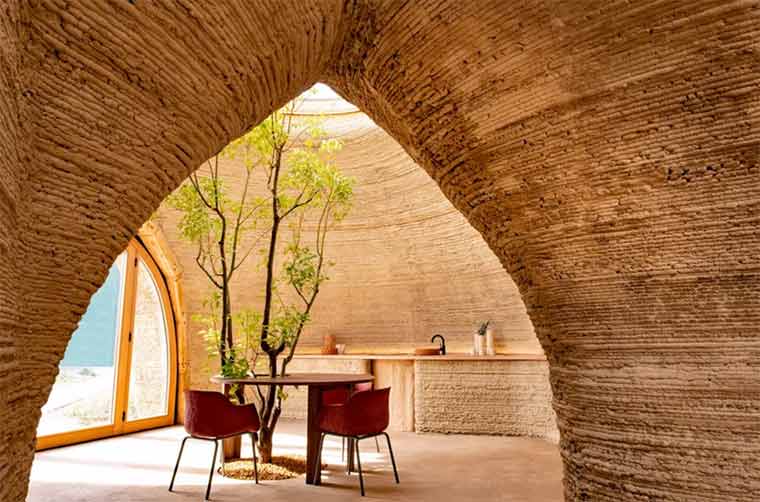In a recent interview by Archinect’s Niall Patrick Walsh, renowned architect Mario Cucinella shared insights about TECLA, the world’s first 3D-printed house made from raw earth, and his firm’s approach to sustainable design. Here’s a recap of the key points discussed:
- Cucinella Architects’ Principles: The firm focuses on two core principles: empathy with the environment and creativity. By considering environmental factors from the outset, such as context and data, they strive to drive projects in the right direction. The goal is to merge creativity with empathy, resulting in architecture that respects nature and produces the best possible designs.
- Challenges Encountered with TECLA: 3D printing with raw earth presented unique challenges. The behavior of the material differed from traditional compressed earth construction, leading to issues like cracking. However, the team is working on developing additives to control the material’s response to weather changes, ensuring stability and predictability.
- The Future of 3D Printing in Construction: Cucinella highlights the importance of exploring alternatives to concrete and reducing carbon-intensive materials. While 3D printing has become more effective, he believes it should be part of a broader shift towards sustainable construction methods. By incorporating raw earth and other low-carbon materials, significant reductions in carbon emissions can be achieved.
- Applications of 3D Printing: The availability of local materials and the transportability of 3D printers make them suitable for disaster-stricken areas. TECLA’s innovation lies not only in 3D printing but also in the digital design process. By sending 3D printers and a small support team, structures like homes, schools, and medical spaces can be created without relying on conventional materials.
- TECLA as a Statement of Intent: TECLA represents a bold step towards reimagining architecture. It pushes the boundaries of conventional design and challenges the industry to think differently. Cucinella emphasizes the need for architects to address climate goals and encourages collaboration to find sustainable solutions.
- The School of Sustainability: Cucinella Architects’ SOS – School of Sustainability is a platform for young architects to learn and engage with ecological principles. The architect finds hope in the dedication of these individuals and their deep engagement with sustainability. Incorporating sustainability into architectural practice is crucial for creating a better future.
TECLA’s innovative approach to 3D printing and sustainability showcases the potential for reducing carbon emissions and rethinking traditional construction methods. Mario Cucinella’s insights underscore the importance of empathy with the environment, pushing boundaries, and fostering collaboration in the pursuit of a sustainable built environment.
Photo credit: ©Iago Corazza for architect Mario Cucinella

